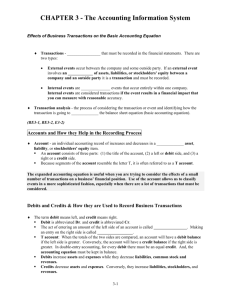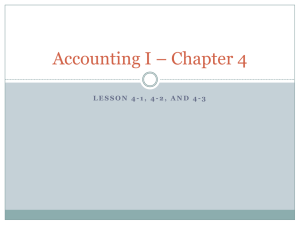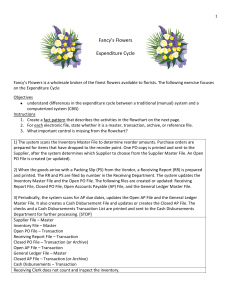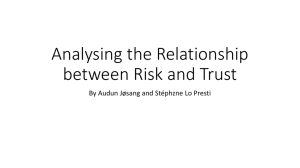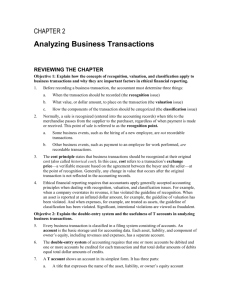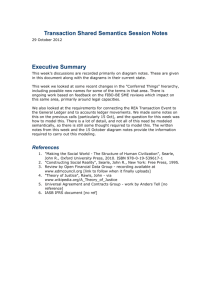Accounting Quiz: Chapter 3 Vocabulary & Multiple Choice
advertisement
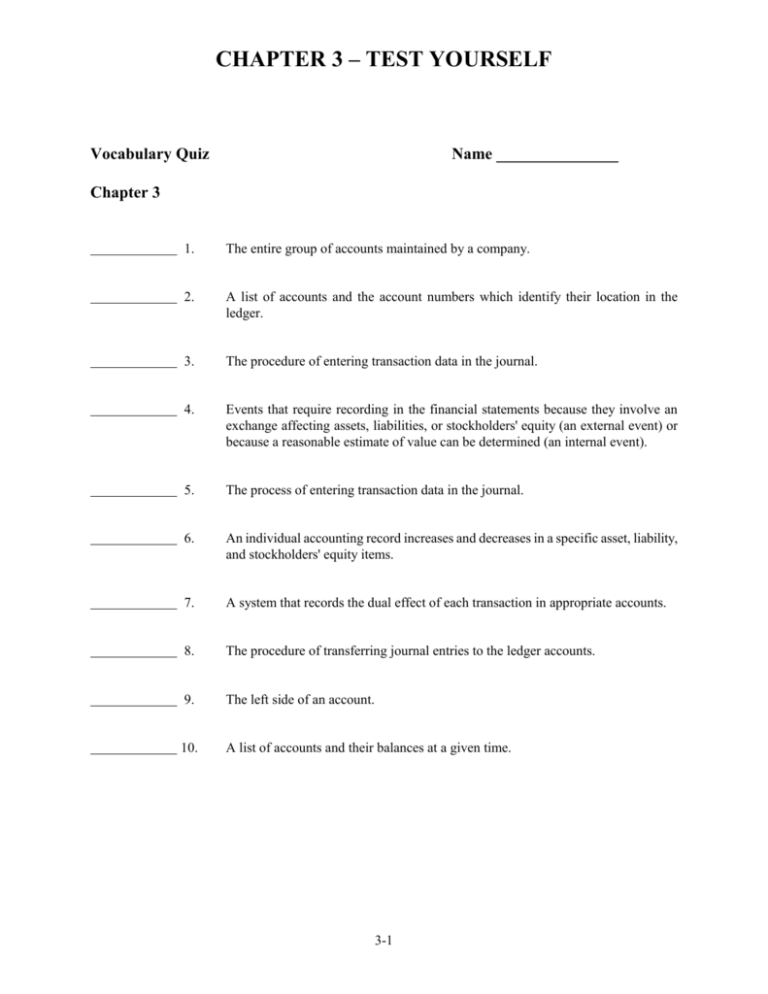
CHAPTER 3 – TEST YOURSELF Vocabulary Quiz Name _______________ Chapter 3 1. The entire group of accounts maintained by a company. 2. A list of accounts and the account numbers which identify their location in the ledger. 3. The procedure of entering transaction data in the journal. 4. Events that require recording in the financial statements because they involve an exchange affecting assets, liabilities, or stockholders' equity (an external event) or because a reasonable estimate of value can be determined (an internal event). 5. The process of entering transaction data in the journal. 6. An individual accounting record increases and decreases in a specific asset, liability, and stockholders' equity items. 7. A system that records the dual effect of each transaction in appropriate accounts. 8. The procedure of transferring journal entries to the ledger accounts. 9. The left side of an account. 10. A list of accounts and their balances at a given time. 3-1 Solutions to Vocabulary Quiz Chapter 3 1. Ledger 2. Chart of accounts 3. Journalizing 4. Transactions 5. Journal 6. Account 7. Double-entry system 8. Posting 9. Debit 10. Trial balance 3-2 Multiple Choice Name _______________ Chapter 3 1. The process of identifying the specific affected accounts and the amount of the change in each account is referred to as: a. posting. b. transaction analysis. c. journalizing. d. balancing. 2. A distribution by a corporation to its stockholders on a basis proportional to each investor's percentage ownership is: a. a credit. b. salary expense. c. wages expense. d. a dividend. 3. Dividends are recorded on the: a. income statement. b. retained earnings statement. c. cash flows statement. d. both b and c above. 4. Items such as a sales slip, a check, a bill, or a cash register tape are examples of: a. balance sheet accounts. b. income statement accounts. c. cost of goods sold. d. source documents. 5. The process of entering transaction data into the journal is called: a. posting. b. journalizing. c. balancing. d. none of the above. 6. Which of the following is not a contribution of the general journal to the recording process: a. The determination of net income. b. It discloses in one place the complete effect of a transaction. c. It provides a chronological record of transactions. d. It helps to prevent or locate errors because the debit and credit amounts for each entry can be readily compared. 7. The basic steps in the recording process are: a. Analyze the transaction, enter the transaction in the journal, and transfer the information to the general ledger. b. Enter the transaction in the journal, analyze the transaction, and transfer the information to the general ledger. c. Analyze the transaction, enter the transaction in the financial statements, and enter the transaction in the journal. d. None of the above. 3-3 8. All of the following accounts have debit balances with the exception of: a. cash b. wages expense. c. unearned advertising fees. d. prepaid insurance. 9. All of the following accounts would have credit balances with the exception of: a. accounts payable. b. notes payable. c. unearned advertising fees. d. dividends. 10. Which of the following mistakes will a trial balance most likely detect: a. A transaction is not journalized. b. A debit balance is recorded as a credit balance. c. a journal entry is posted twice. d. Incorrect amounts are used in journalizing or posting. 3-4 Answers to Multiple Choice Chapter 3 1. b 2. d 3. d 4. d 5. b 6. a 7. a 8. c 9. d 10. b 3-5

